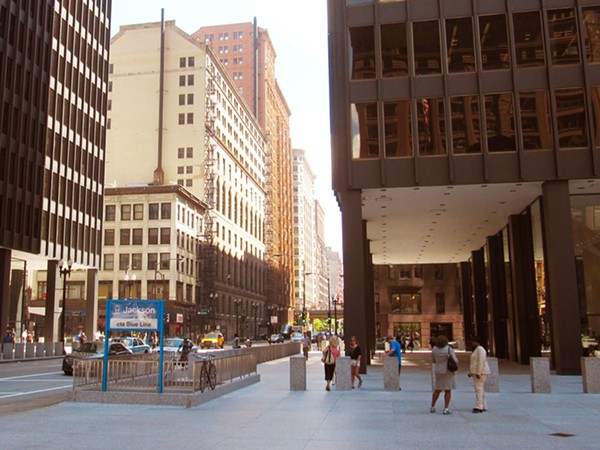[The Chicago Reader publishes a weekly transportation column written by Streetsblog Chicago editor John Greenfield. We syndicate a portion of the column on Streetsblog after it comes out online.]
Over the last year we've looked on with horror at a half-dozen cases in Europe and New York City in which assailants have used trucks and cars as deadly weapons to intentionally injure and kill large numbers of innocent people on foot. In the wake of these awful events, it makes sense to reduce the chance of this kind of attack happening in Chicago. In the past, city, county, state, and federal authorities installed vehicle-resistant barriers around buildings and plazas that could be targets, and after a truck assault on a Berlin Christmas market last December, the Chicago police staked out the Christkindlmarket in Daley Plaza.
But as decision makers implement such safeguards, it's also important not to lose sight of the lower-profile but more pressing issue of common traffic violence. Each day dozens of people are injured in crashes in Chicago, and every year more than 100 lives are lost in such incidents. A disproportionate number of the victims are pedestrians. The city should start treating this more routine form of carnage as the public health crisis it is, and take aggressive action to lower these tragic numbers.
Obviously the authorities should still view the recent rash of people using vehicles to kill for ideology, or out of senseless rage, as a crisis that has to be addressed. The series of attacks in Europe—all of which the Islamic State inspired or claimed responsibility for—began last July, when a man drove a 19-ton cargo truck into crowds celebrating Bastille Day on a promenade in Nice, France, killing 86 people and injuring 434. That nightmare was followed in December by the Berlin attack, which killed 12 people and injured 56. On April 7 of this year another assailant drove a truck into crowds on a Stockholm pedestrian street, killing five and injuring 15.
London was the site this year of two different vehicle attacks at Thames River bridges. On March 22 an assailant drove a car into pedestrians on the south side of Westminster Bridge, murdering four people and injuring more than 50 before fatally stabbing a police officer. And on June 3 a van driver struck people walking on London Bridge before he and his two passengers ran to a nearby nightlife strip to attack bystanders with knives, resulting in eight deaths and 48 injuries.

Closer to home, on May 18, 26-year-old navy veteran Richard Rojas drove his car down a Times Square sidewalk for three blocks, mowing down pedestrians in what appeared to be an act of sociopathic fury before the vehicle made a fiery crash into metal bollards and came to a stop. Alyssa Elsman, an 18-year-old tourist from Michigan, was killed and 22 others were injured. Police said Rojas, who has a history of mental illness and drunk driving, was under the influence of drugs at the time, but terrorism is not suspected.
Taking steps to prevent intentional vehicle assaults such as these is nothing new in Chicago. In the wake of 9/11, authorities installed steel, concrete, and stone bollards, planters, and benches around government and financial centers including the Daley Center, the Kluczynski Federal Building, and the Chicago Board of Trade.
In the case of the Christkindlmarket intervention, CPD parked trucks at the corner of the square and patrolled the area on bikes. Police spokesman Anthony Guglielmi, in a statement on Twitter, said "while there is no threat to the city or the greater area," CPD was beefing up security at the plaza with extra patrols. "We continue to work closely with the Cook County Sheriff's Office and the Office of Emergency Management and Communications as well as with federal partners to ensure an optimal level of public safety throughout the holiday season."






